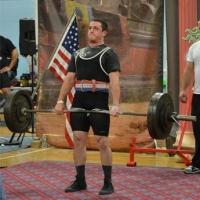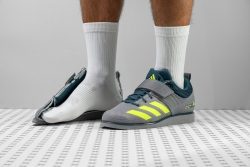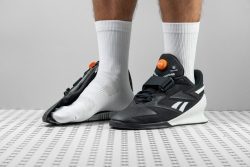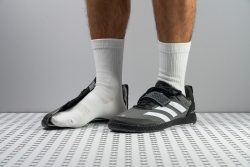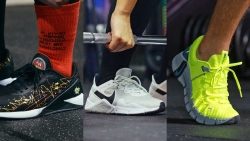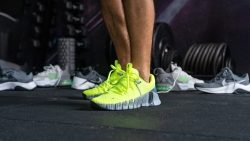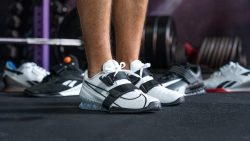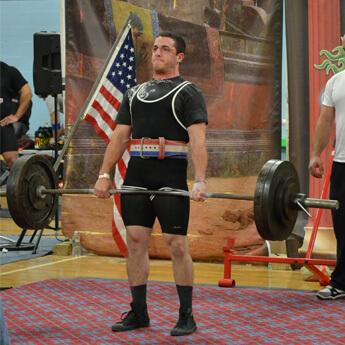3 Best Powerlifting Shoes in 2025
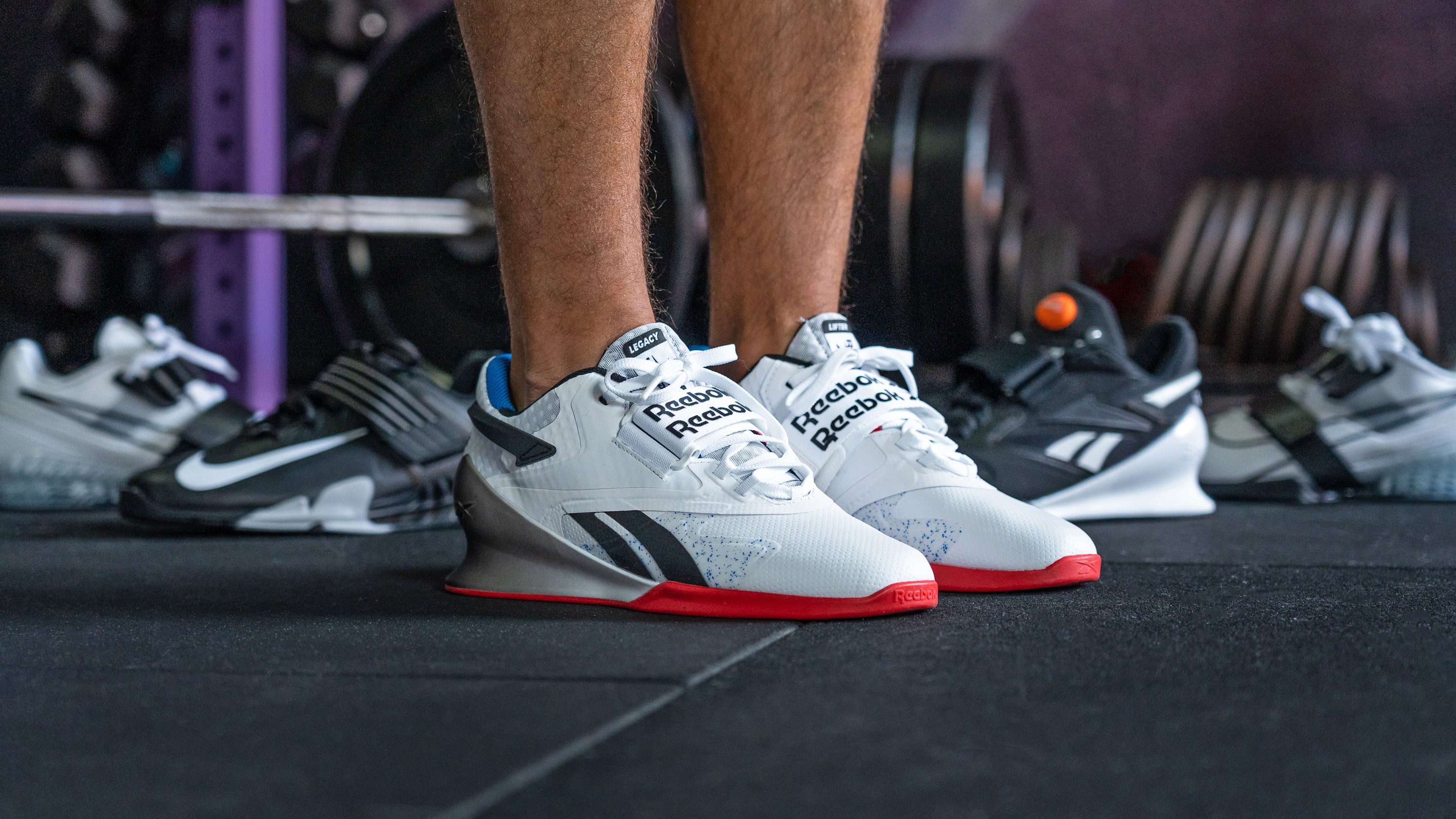
We buy shoes ourselves. We earn commissions when you buy through us, at no extra cost. Why trust us
Powerlifting is a strength sport that involves three lifts: squat, bench press, and deadlift. But here is the trick — professional powerlifters don’t always use the same shoe for all three!
To maximise their potential, athletes may turn to high-heeled lifting shoes for squats and switch to flat shoes for deadlifts. But do you need both types of shoes? Our comprehensive guide below will help you figure that out.
How we test powerlifting shoes
All of our shoe recommendations are backed up by hours of testing and scrutiny.
In addition to assessing their performance during squats, bench presses, and deadlifts, we take each lifting shoe through dozens of tests and measurements in our lab.
That includes cutting them in half to measure stack, drop, and platform firmness, using specialised equipment to measure their stiffness and grip, and drilling them with sandpaper to test durability, among other demanding tests.
We also reject brand sponsorships to keep our reviews as objective as possible.
Best powerlifting shoes overall
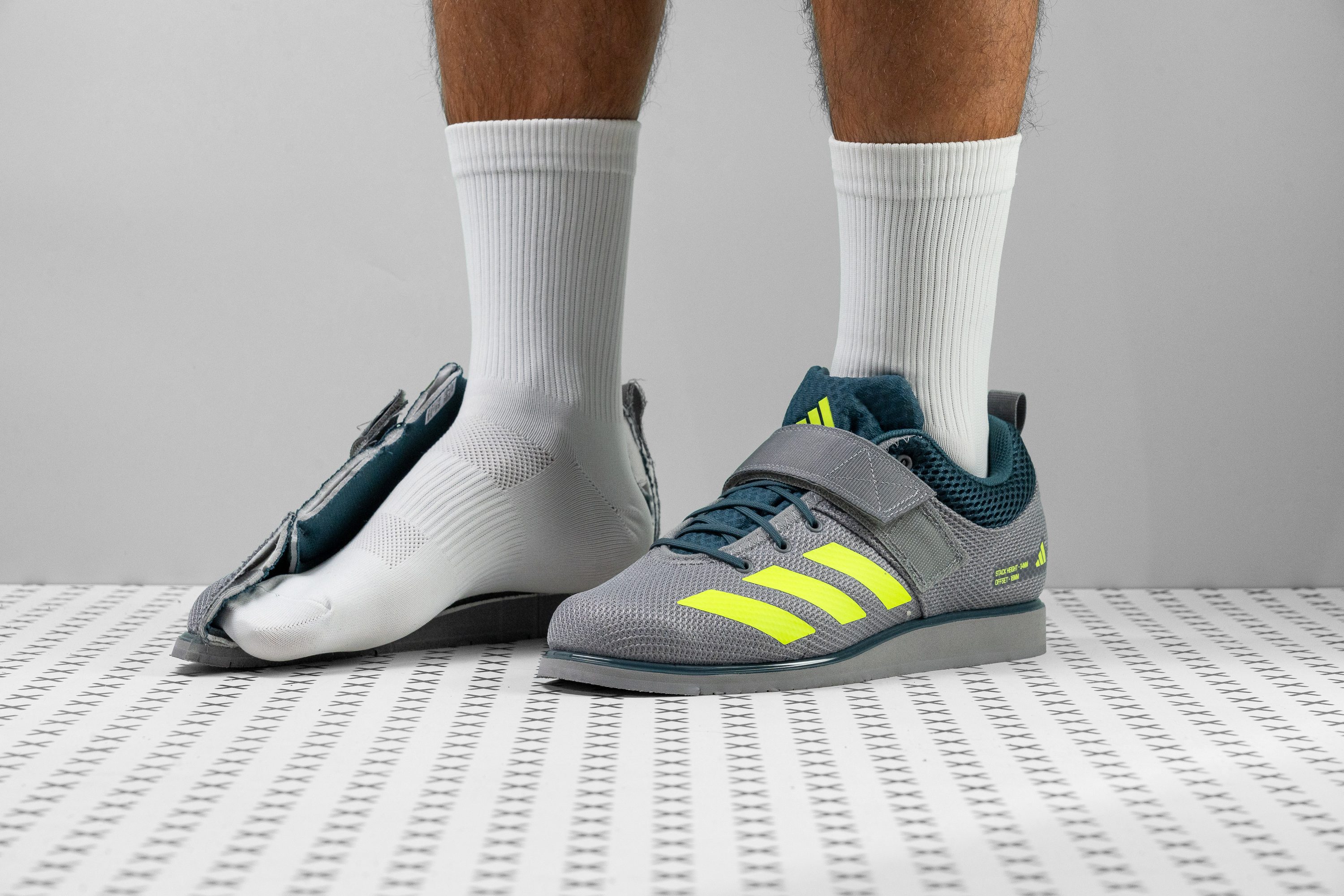














































What makes it the best?
When it comes to powerlifting, nothing beats the Powerlift 5 from Adidas because of its notably thick outsole, great twist resistance, and amazing heel lockdown. All these benefits worked together to keep our stances strong and steady when we did powerlifts.
Compared to the 3.9 mm average, the outsole of the Powerlift 5 is quite thick, registering at 5 mm on our calliper. We also learned that the outsole is as durable as other lifting shoes, hence its thickness is a sure sign that it lasts longer than average.
In the lab, we manually bent and twisted this shoe to see how resistant it is. To our delight, it felt perfectly like the resistant type. It got a 5 out of 5 from us. We never had to worry about our ankles rolling anywhere because of the firmness of the base.
We also subjected the heel counter to manual lab assessments. After giving it a huge squeeze, we confirmed the strong clasp that we felt while wearing the shoe. It was one stiff heel counter that got a perfect 5/5 from us.
Durability is not a strong point of this shoe, though. Our Dremel tests on both the upper and heel padding resulted in serious damage. We rated the toebox part of the upper a 2 out of 5 while the heel padding got the lowest 1 out of 5 rating.
Pros
- Stable base for moderate lifting
- Good for accessory exercises
- Solid bite on gym floors
- Secure foothold
- Supportive Velcro strap
- Reasonably priced
- Contains sustainable materials
Cons
- Lacks breathability
- Upper is not very durable
- Tongue shifts
Best powerlifting shoes for squats
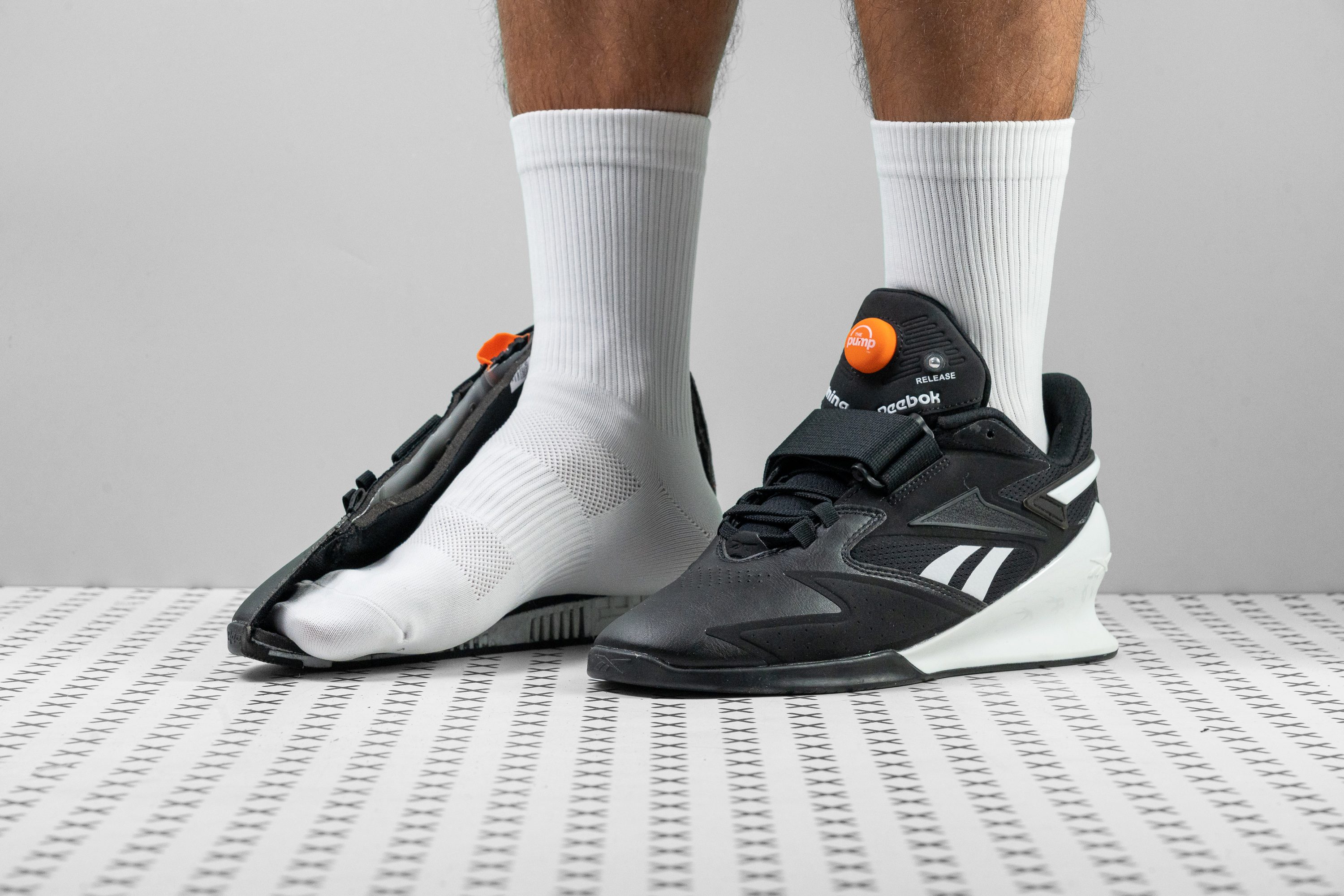





































What makes it the best?
The Reebok Legacy Lifter III is our pick for the premier powerlifting shoe for squats thanks to its super-stiff platform, unrivalled stability, and great outsole grip.
The Legacy Lifter III's TPU heel is made of some seriously sturdy stuff. We measured its hardness at 95.1 HA, which is 27% harder than the average weightlifting shoe, and we did not feel that stiff heel compress at all, even while doing our heaviest squat sets.
And while it has quite a narrow platform - 5.1 mm and 0.7 mm narrower than average in the forefoot and heel, respectively - the Legacy Lifter III remains incredibly stable. We gave it a perfect score of 5 out of 5 in torsional stability, as were simply unable to twist the shoe with our bare hands. Similarly, its heel counter stiffness also got the highest stiffness score, and we felt our feet securely locked in the shoes whenever we got under the bar.
The shoe's outsole grip also doesn't disappoint. Our durometer measured the outsole rubber's hardness at 79.5 HA, which is below the average of 85.0 HA. But that slightly softer rubber delivers great grip, as our feet stick so well to wooden and rubber floors, especially during our squat workouts.
However, we did find that the shoe's actual heel to toe drop is 20.5 mm, which is slightly shorter than the brand's stated drop of 22 mm. So for those looking for a higher drop shoe to squat in, keep that in mind.
Pros
- Mind-blowing stability
- Incompressible platform
- High heel helps with posture for squats
- Highly supportive upper
- Top-notch durability
- The Pump feature is fun and improves the fit
Cons
- Unreasonable price hike
- Short Velcro attachment
Best powerlifting shoes for deadlifts
















































What makes it the best?
Among powerlifting shoes we’ve worn and lab-tested, Adidas The Total’s zero-drop heel and low-to-the-ground stance prove it’s the best for deadlifts. It gives us the confidence to lift heavier or longer since its low nature, vast base, and grippy outsole make it optimal for this type of lift.
Deadlifts require more than just our brute strength. The flat heel and high surface feedback enhance the required balance and coordination to perform this technical lift. Our calliper reveals a low 12.5 mm in both the heel and forefoot, which means it has no incline. This added stability that felt great for lifting. In addition, the firm cushion ensured it wouldn’t bottom out with its 44.4% firmer-than-average durometer result.
Having proper form is key since it involves our whole body. The wide platform allows our natural toe splay and activation of the right muscle groups. Our feet don’t feel restricted as the shoe tapers subtly to the 86.5 mm big toe area. On top of that, the outsole has a solid bite over various surfaces, translating to more controlled movements.
Surprisingly, the shoe offers much flexibility, making it versatile enough for plyometrics and floor exercises. Our bend test reveals it’s 44.8% more bendable than average. While this feature is great for some, it’s too flimsy for more serious and heavier weightlifting.
Pros
- Ideal for deadlifting
- Great traction
- A lot of ground feel
- Plenty of toebox space
- Lightweight and comfortable
- Fairly priced
- Streamlined look
Cons
- Not so much breathability
- Not for heavy squats
Are powerlifting shoes the same as weightlifting shoes?
It’s easy to confuse the two because they indeed overlap.
Weightlifting shoes are also referred to as squat shoes because their wedged platforms have elevated heels that are specifically designed for barbell back squats and other Olympic weightlifting movements like cleans, jerks, and snatches.
And because back squats are a major part of powerlifting, high-heeled weightlifting shoes are often used for this exercise.
| Powerlifting exercise | Shoes used |
| Squat | High-heel lifting shoes or Flat shoes |
| Bench press | Flat shoes |
| Deadlift | Flat shoes |
Choosing the right powerlifting shoes for you
While your powerlifting performance largely depends on your power and technique, a carefully selected lifting shoe will only help you maximise that potential. After all, you can’t expect to hit a PR when your body alignment is off and your feet are wobbling around.
Not only will the right shoe facilitate a proper lifting form but it will also increase your chances of lifting more weight with a lower risk of injury.
Shoes for squats
High-heeled weightlifting shoes or flat shoes? That is the dilemma most powerlifters face when they start training seriously.
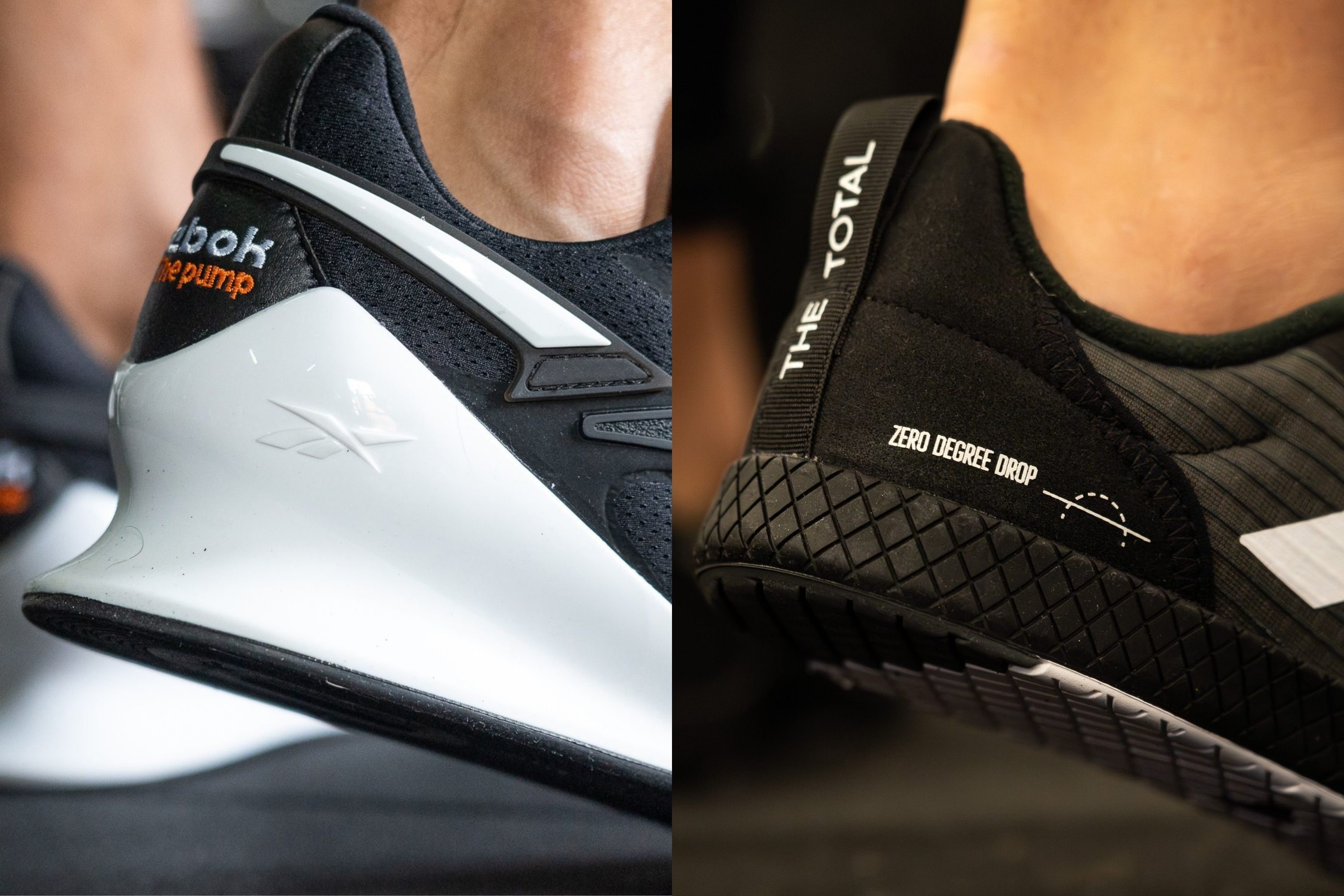
The right answer depends on your ankle mobility, body composition (femur length), squatting style (high-bar or low-bar, narrower or wider stance), and of course personal preference.
|
Choose high-heel shoes if… |
|
If high-heeled weightlifting shoes appeal to you, here is an overview of the best-rated shoes for powerlifting squats:
As you can see, the heel-to-toe drop of these shoes ranges from 15 mm (0.6 in) to 21 mm (0.8 in), offering you even more options to experiment with. Some powerlifters reap the benefits of the highest heel drops while others find them an overkill and prefer lower drops instead.
Considering the cheaper price point of lifting shoes with the lower drop, they might be a better starting point for beginner powerlifters.
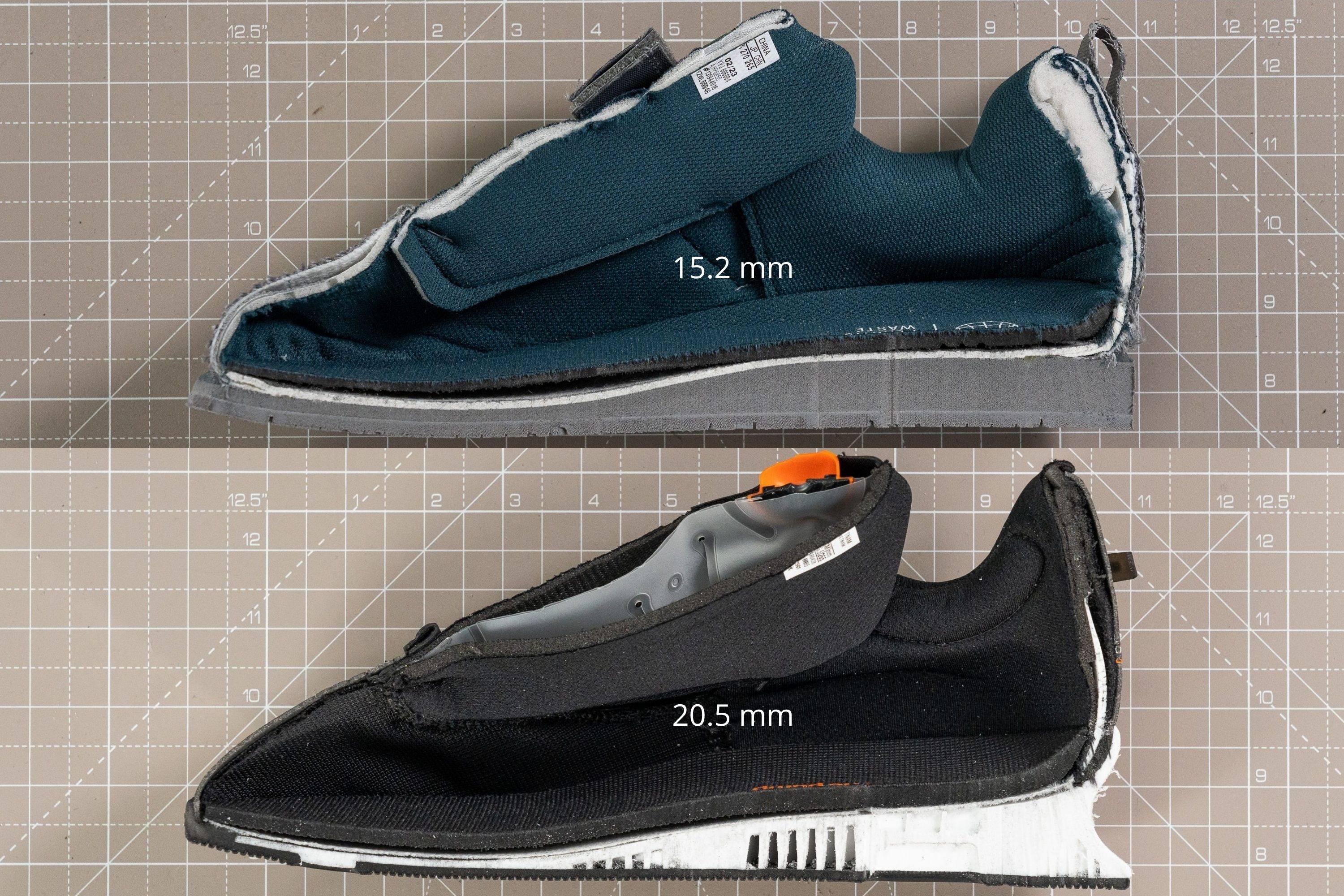
Some advanced athletes don’t need an elevated heel to stay stable, squat deep, and remain upright in a back squat. These folks prefer flat powerlifting shoes with a zero heel-to-toe drop.
|
Choose flat shoes if… |
|
If you choose flat shoes for squats, they will most likely serve as your deadlifting shoes as well.
Shoes for deadlifts
Shoes with elevated heels can be helpful during squats but they are not optimal for deadlifts at all.
Lifting a loaded barbell in front of your body requires completely different biomechanics compared to squatting with it behind your back.
When deadlifting, you want your entire foot to stand flat on the floor to prevent your body from tilting forward and to be able to press down into the ground for power and leverage.
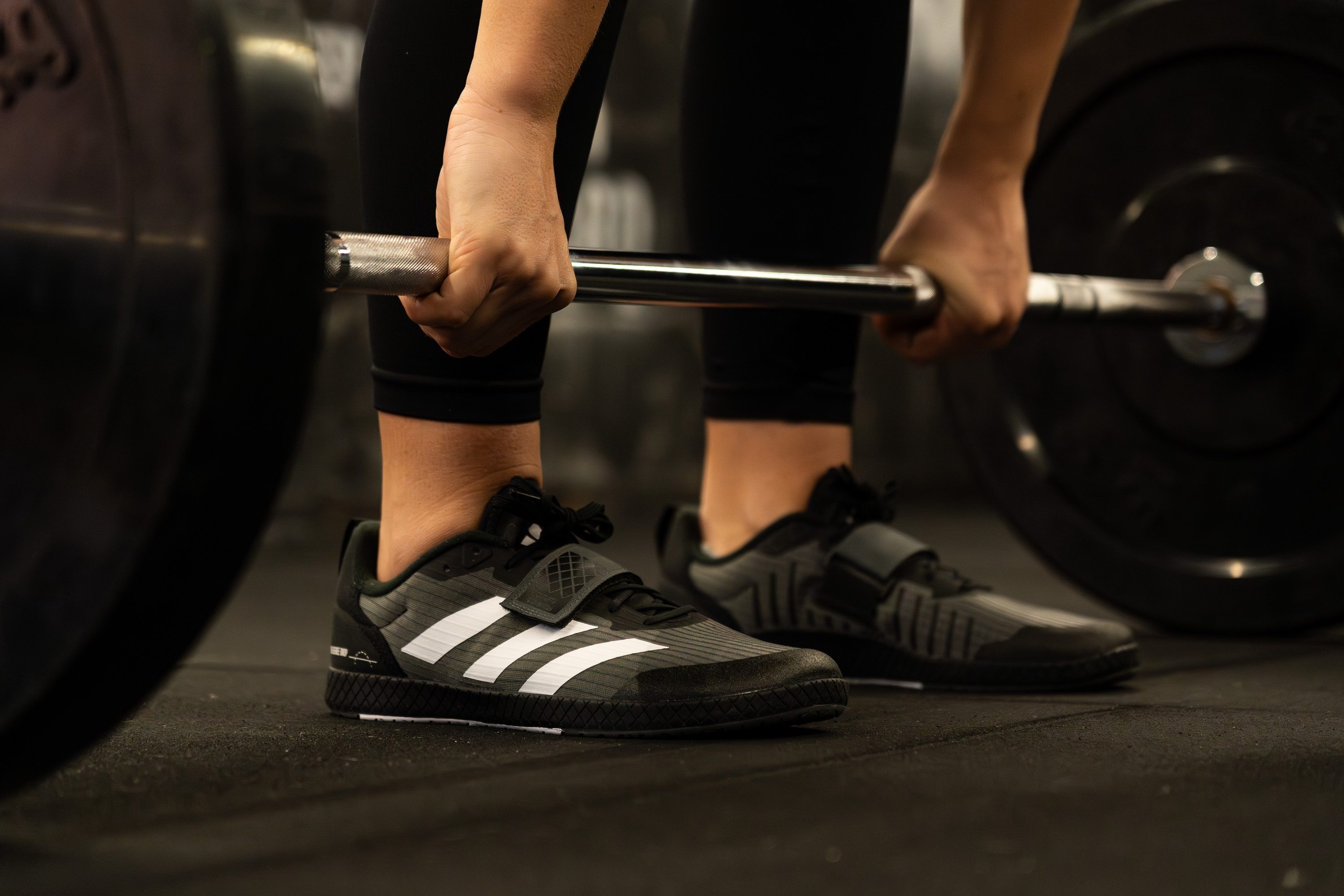
Because of that, a good deadlifting shoe will have the following features:
Low-stack and flat platform: To feel 100% grounded, you want a platform thickness of no more than 20 mm in the heel and a heel-to-toe drop of 0-4 mm.
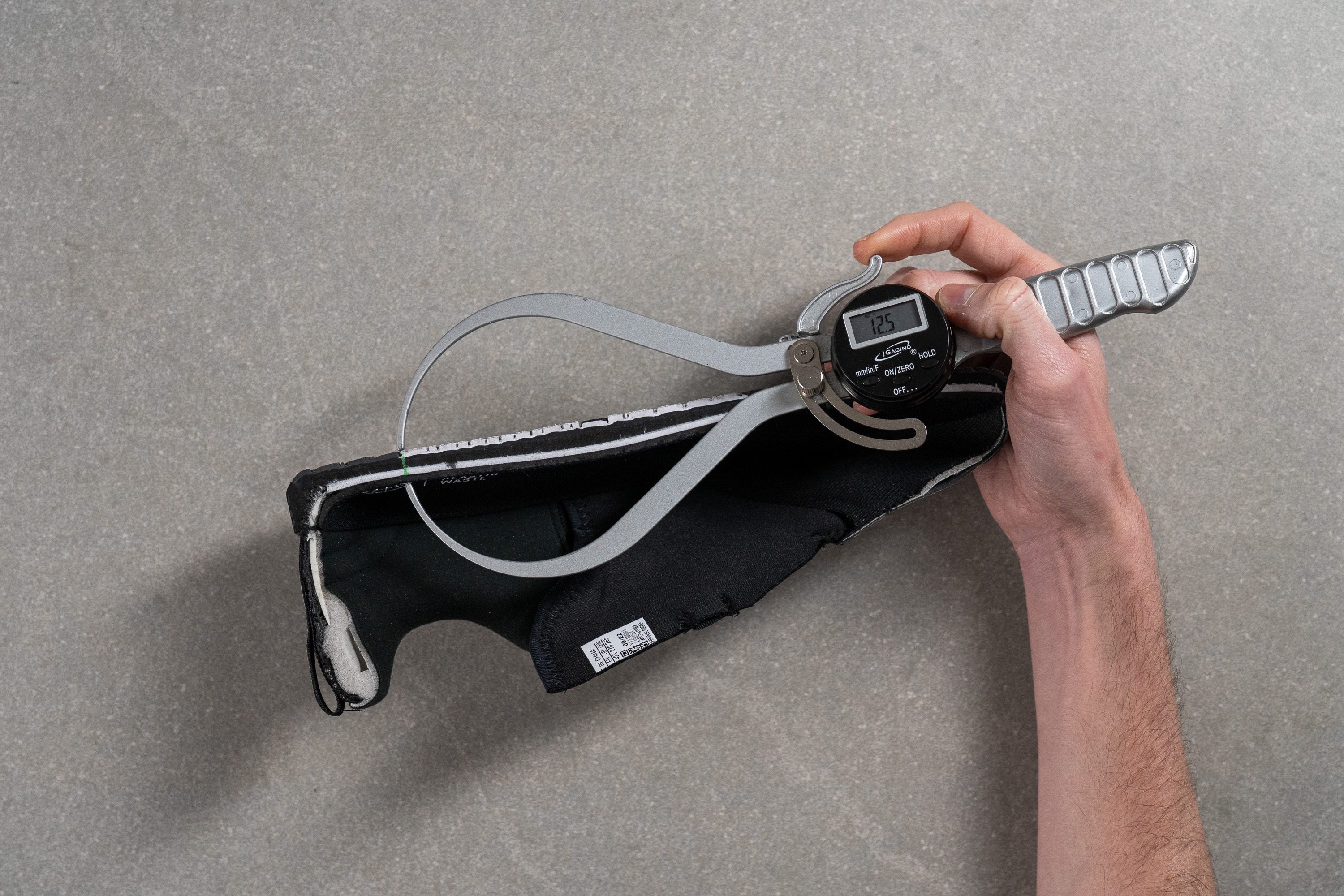
Firm and incompressible sole: Made of dense EVA or rubber, there should be no give in your deadlifting shoe’s sole. You don’t want any of your energy to be lost to shoe compression.
Measuring the sole firmness of each powerlifting shoe, we look for a durometer reading of at least 30 HA (preferably, 40+).
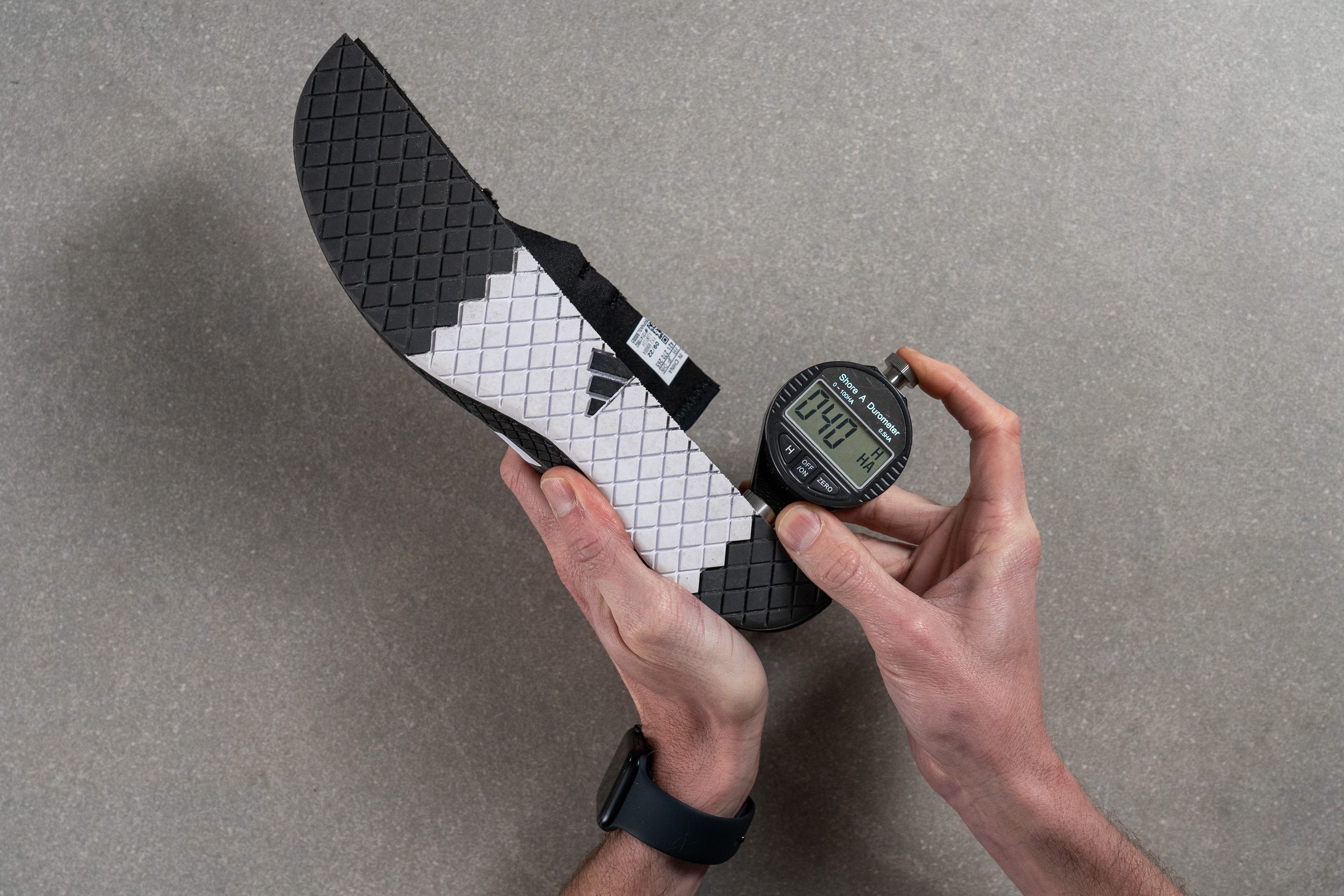
Grippy outsole: You want to remain surefooted and slip-free be it on a wooden or carpeted platform or rubber gym flooring. The shoe’s grip should also remain strong if the surface gets wet from sweat or slippery from dust and chalk.
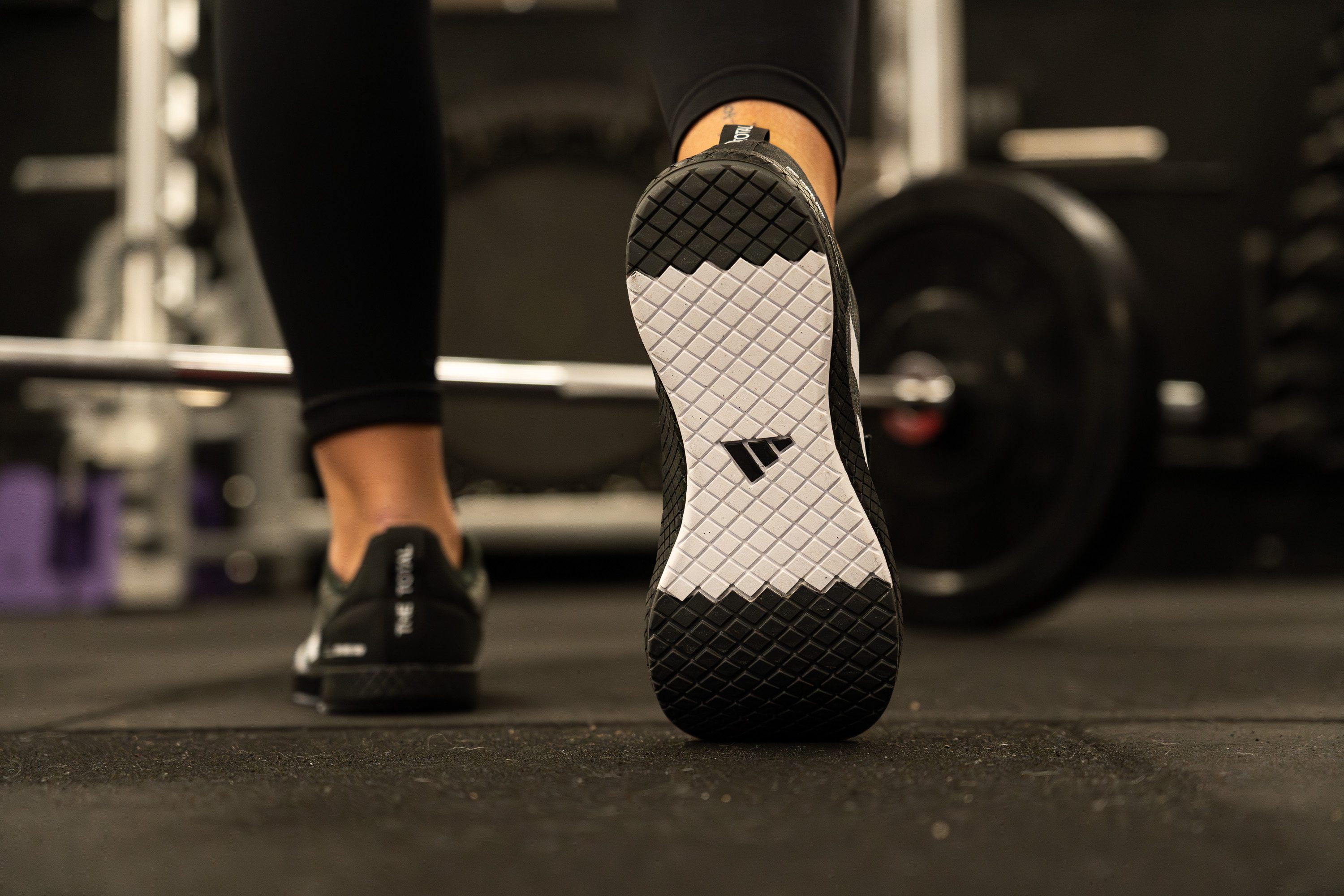
Roomy toebox: Your toes should be able to spread wide and free to help you balance and grip the floor more effectively under heavy load. You don’t want any toe cramping or pinching either.
We measure the width and toebox space of each powerlifting shoe by creating a gel mould of its interiors.
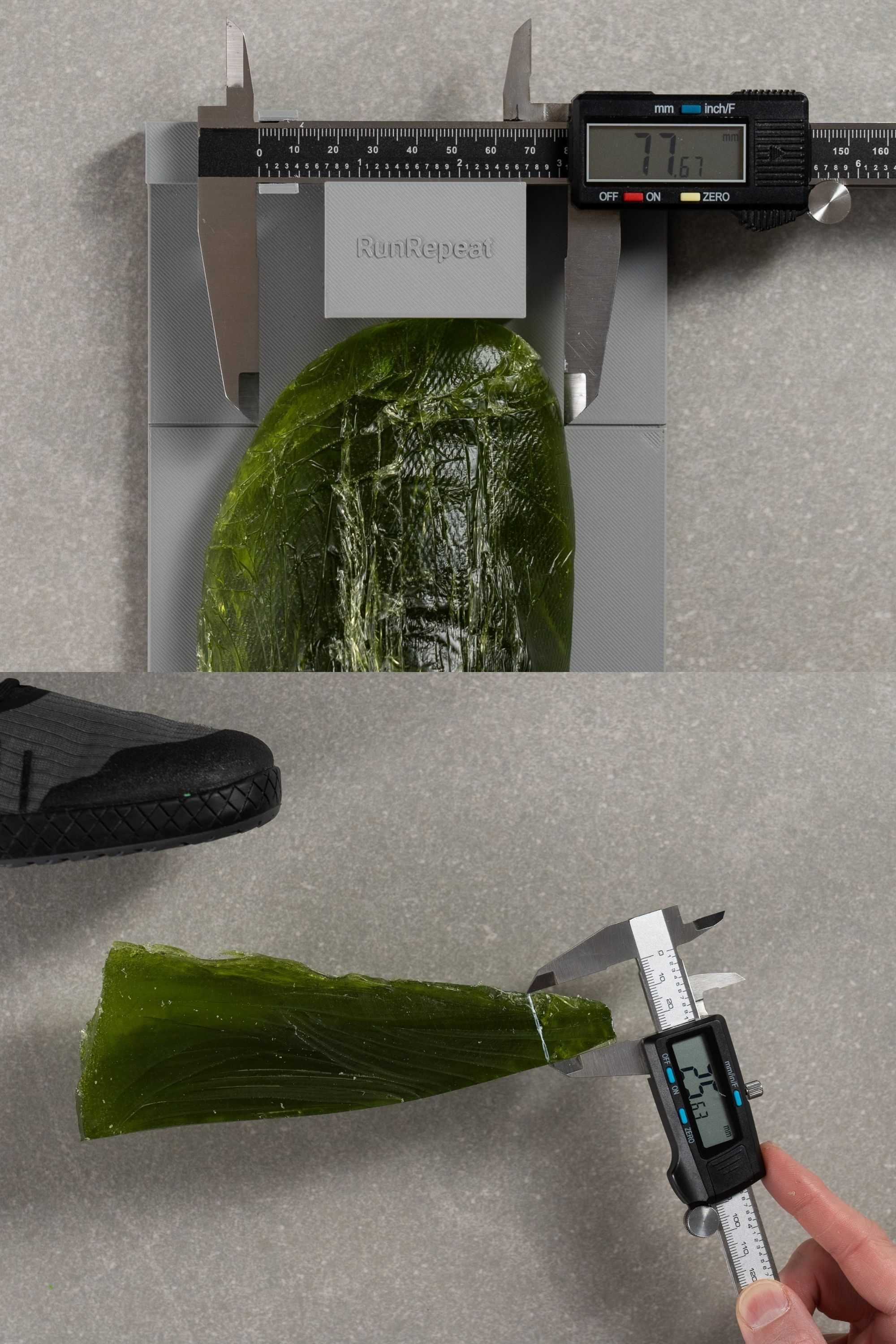
So what kinds of shoes meet the criteria mentioned above? These can be:
- Specialised deadlifting shoes from popular brands like Adidas or more niche ones like Notorious Lift, Avancus, and Sabo.
- Cross-training shoes with a low stack and minimal drop (0-4 mm).
- Minimalist or barefoot trainers from brands like Vivobarefoot, Born Primitive, Xero Shoes, and Vibram FiveFingers. By the way, multi-toed shoes are no longer banned by IPF.
- Deadlifting slippers from A7 or other specialised brands.
- Wrestling shoes from any brand.
- Converse Chuck Low Top or High Top, Vans, and similar kicks with flat and dense platforms. These shoes are popular among beginner powerlifters because of their low prices. However, their narrow and pointy toeboxes make them less than ideal for toe splay.
- Barefoot/socks. This is an option too if you are training in the comfort of your home gym or if the gym you go to allows it.
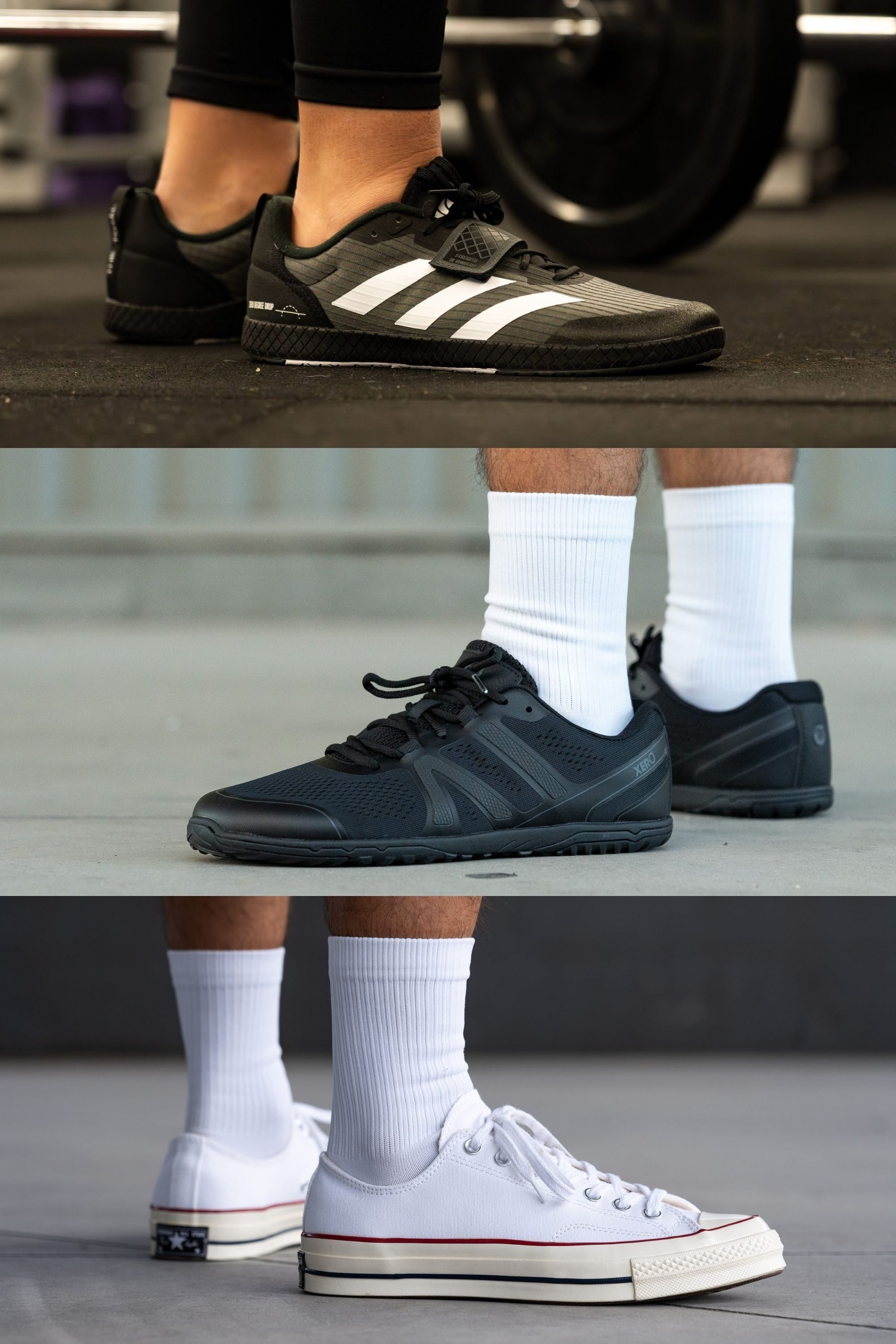
Shoes for bench presses
Flat shoes are the most common choice for bench presses because they cater to the flat-foot (heels down) position as opposed to benching on your toes (only toes touching the floor).
What’s more, the flat-foot position is required by IPF/USAPL for competitions.
Because of that, you can bench press in the same shoes you chose for deadlifts because the same features still apply here - a flat, thin, and firm platform with excellent grip and sufficient toe space.
IPF/USAPL federation standards for powerlifting shoes
According to the 2025 rulebooks released by the International Powerlifting Federation (IPF) and USA Powerlifting (USAPL), there are a few regulations regarding shoes that can be allowed for competitions:
- Footwear in the form of closed-toe indoor athletic shoes, powerlifting boots, or deadlift slippers must be worn on all lifts (squat, bench press, and deadlift).
- Dress shoes, hiking boots, sandals, cleated footwear, Crocs (or their like), water/aqua socks, and socks with a rubber outer sole lining cannot be worn in any lift. Note: Multi-toed shoes (e.g., Vibram Five-Fingers Shoes) are allowed provided they meet all other specifications in this section.
- Other than the allowance for a raised heel (maximum allowable height of heel = 5 cm*), the underside of the footwear must be flat (i.e., no projections or irregularities) and cannot be altered or manipulated from the manufacturer’s original design.
- Loose inner soles (i.e., inserts, orthotics) that are not part of the manufactured shoe may be worn but are limited to a thickness of no more than 1 cm.
*For reference, the highest weightlifting shoe in our lab (Reebok Legacy Lifter II) has a heel stack of only 3.5 cm.
